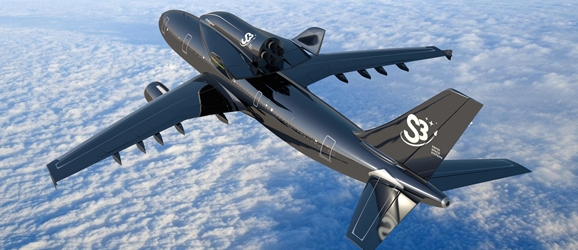Unmanned Spaceplane Test Flight Planned for 2014

I don’t think it would be outside the means of science to resurrect John Denver in a few years specifically to re-record “Leaving on a Jet Plane” as a semi-parody called “Leaving on a Space Plane,” which would coincide with the planned launch of an actual space plane. Seems natural to me.
After the early success of a proposed solar-powered around-the-world plane, Switzerland is back at making air travel easier and cheaper with Swiss Space Systems, a group-managed aerospace company founded in Payerne by Pascal Jaussi. Through a number of corporate sponsors, the necessary funding of $265 million was raised, and now Jaussi’s planned “democratization” of transportation and shipping through space can begin, with the inexpensive routine Airbus A300 prototype.
In theory, the Airbus would take off from a regular commercial airport with a fat little unmanned shuttle strapped to its back. Once it hits around 33,000 ft, the Airbus will release the shuttle, which will power its own rockets to travel another 230,000 ft. up through the troublesome parts of the atmosphere. It will then release whatever payload it’s carrying into orbit, where it can make its way to the ISS or wherever it needs to go. (But no loitering!) Both manned and unmanned planes would land on the runway the same way commercial airlines do, and then be prepped for the next flight. The video below does a better job of showing the plan in action.
Jaussi is planning for a 2014 mockup flight before opening an actual spaceport in Payerne. 2016 would be the year for the actual shuttle’s assembly, and the first test flight with a satellite payload would happen in 2017, should all go according to plan. Launches are estimated to cost between $10 and $11 million to send a 250 kg shipment, which is around four times cheaper than current costs.
While it may have seemed like a far-off science fiction in the past — despite Futurama showing us how space delivery will actually work in a thousand years — both the technology and the international support are there. S3 is partnered with companies from Spain, Belgium, France, and the U.S. And even though Malaysia isn’t usually the deciding factor between legitimacy and fantasy, they’re already prepping their own spaceport, with other countries to hopefully follow.
Satellite deliveries now, breathtaking joy rides in the future. So long as it has an onboard computer that can locate the thermal exhaust port of the Death Star…








